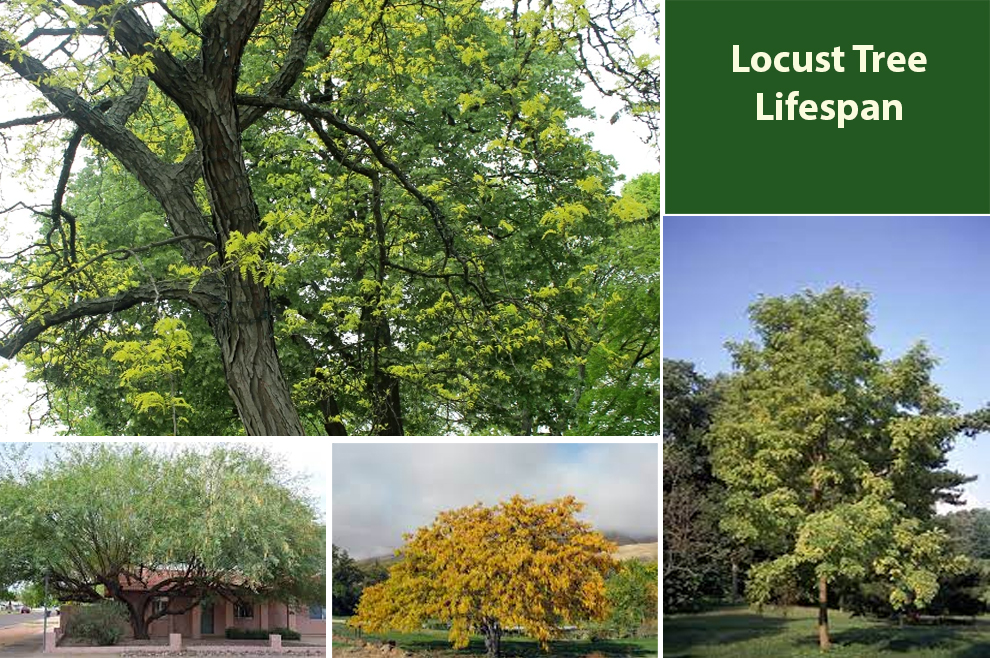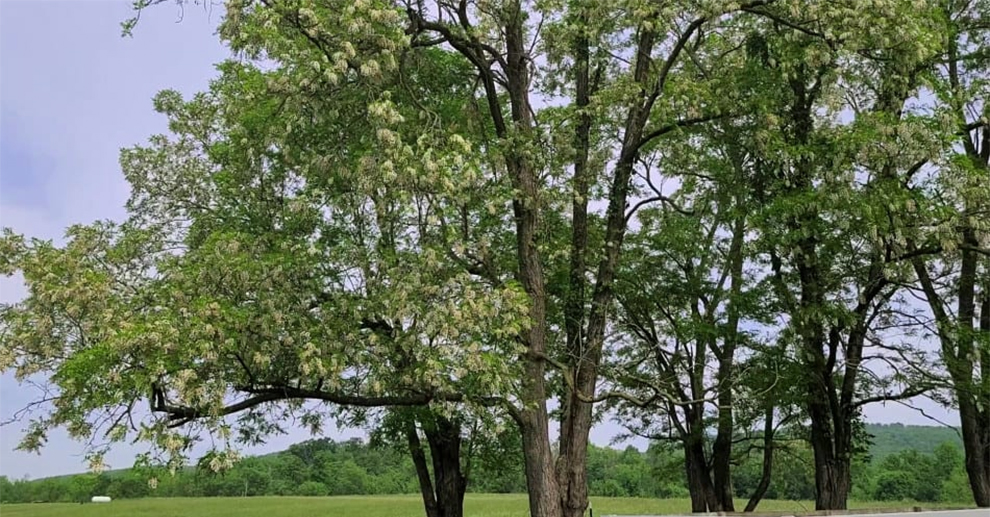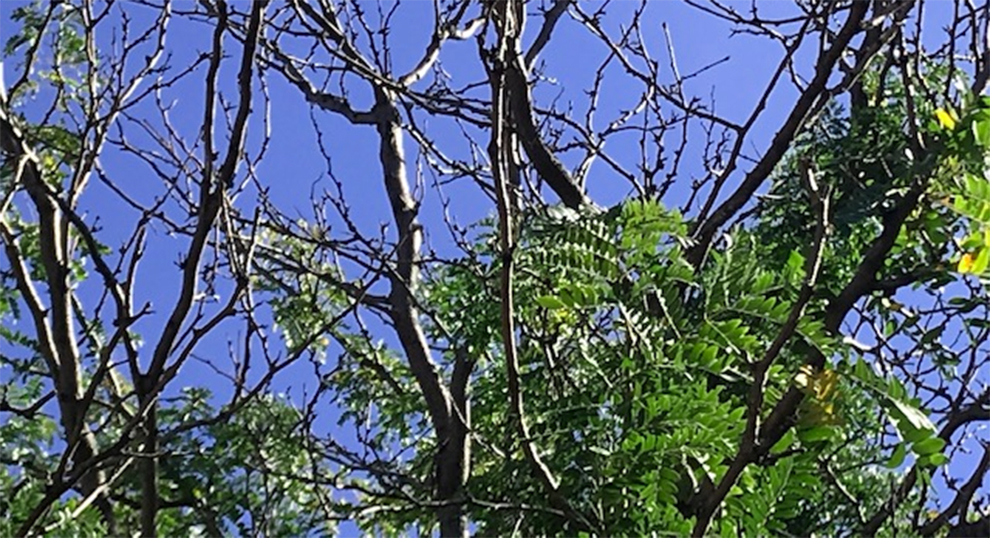Locust Tree Lifespan – How Long Is It?
The lifespan of a locust tree can vary depending on multiple factors. However, generally, they fall within the range of 120 to 150 years.

Scientifically called the Robinia pseudoacacia, the Locust Trees are deciduous trees native to North America. They are popular for their beautiful clusters of pea-like, fragrant flowers and distinctive compound leaves.
But what interests many is how long do locust trees live. These trees have a long lifespan of 120-150 years but surprisingly it is considered relatively moderate as compared to some other long-living tree species.
But within their average lifespan, locust trees can grow quite tall and develop a broad canopy, providing ample shade and aesthetic appeal. They are hardy and able to endure a range of environmental conditions, including poor soil quality and drought.
As the locust trees age, they develop a rugged and gnarled appearance, adding character to the surroundings.
Over the years, their wood becomes durable and dense, making it suitable for different purposes, including fence posts, furniture, and outdoor construction.
Overall, the locust tree’s lifespan lets it thrive and contribute to its ecosystem for several generations, showcasing its beauty and resilience and beauty over the years.
Do Locust Trees Live Long?
Yes, locust trees have a fairly long lifespan. These magnificent trees live for several decades. With their ability to adapt to different environments and endure different locations, locust trees stand tall as resilient symbols of longevity.
Over the course of their lives, they offer beauty, shade, and contribute to the ecosystem, leaving an enduring impact on the landscapes they inhabit.
What Is The Average Locust Tree Lifespan?

The average lifespan of a locust tree ranges from 120 to 150 years. Native to North America, these remarkable trees exhibit longevity that lets them thrive for many decades.
Across their lifespan, the locust trees offer their graceful presence, adorned with lush foliage and fragrant flowers.
With their ability to endure diverse environmental conditions, locust trees leave an enduring mark on the landscape, symbolizing beauty and resilience for generations to come.
The Lifespan of Common Locust Varieties
You must understand that the lifespan of these trees varies depending on your chosen locust tree variety. Some factors that determine the lifespan of a locust tree are care given, genetic traits, and environmental conditions.
A. How long do black locust trees live?
Black locust trees or Robina pseudoacacia have an average lifespan of 30 to 50 years. But with proper care and optimal growing conditions, some specimens have been known to live for over 100 years.
Factors such as disease resistance, soil quality, and climate can also influence the Black locust trees’ longevity.
B. Honey locust tree lifespan
Honey locus trees (Gleditsia triacanthos) usually have a lifespan of 70 to 100 years. But with favorable growing conditions and proper maintenance, some honey locust trees are known to live beyond the century mark.
Environmental factors, such as soil conditions and climate, and the tree’s health, can influence the lifespan.
C. Thornless honey locust lifespan
Thornless honey locust varieties (Gleditsia triacanthos inermis) have a similar lifespan to their counterpart, the honey locust trees. On average, the thornless honey locust trees have a lifespan of 70 to 100 years.
However, individual tree health, environmental conditions, and care practices can affect their longevity, potentially extending their lifespan beyond a century.
D. Bristly Locust
Bristly locust trees (Robinia hispida) have a relatively shorter lifespan than most other locust varieties. These trees usually live for 20 to 30 years.
Factors like disease susceptibility, environmental conditions, and overall tree health can impact the longevity of bristly locusts, influencing their lifespan within this range.
What Factors Affect The Lifespan Of A Locust Tree?
Broadly, the locust tree’s lifespan can be influenced by multiple factors, such as:
1. Environmental conditions: The soil quality, climate, water availability, and exposure to extreme weather events can impact a locust tree’s lifespan. Harsh conditions like extreme cold, drought, or excessive heat, negatively influence their longevity.
2. Pests and diseases: Locust trees are susceptible to several diseases like fungal infections, crankers, or insect infestations. The presence of diseases or pests weakens the tree’s overall health and can potentially shorten its lifespan.
3. Genetic traits: Different locust tree varieties have inherent genetic traits that affect their lifespan. Some varieties live longer or have better disease resistance, whereas others may be more short-lived or susceptible to certain conditions.
4. Care and maintenance: Proper care, such as regular watering, pruning, and feeding, contributes to the locust tree’s health and longevity. Adequate care helps the tree endure stress, resist diseases, and maintain its overall vigor.
5. Site selection: Planting a locust tree in an optimal location that offers adequate sunlight, suitable soil conditions, and proper drainage can positively impact its lifespan. A well-chosen site can reduce stress on the tree and promote healthy growth.
6. Human impact: Human activities like damage from construction, improper pruning, or soil composition around the tree’s roots have a detrimental impact on the locust tree’s lifespan.
Consider these factors and offer your plant the desired care to maximize how long do locust trees live and ensure its healthy growth over the years.
Why Is My Locust Tree Dying Before Reaching Its Full Age?

There could be multiple reasons for your locust tree to die before reaching its full age. Here are some potential factors to consider:
1. Environmental stress: Locust trees struggle to thrive if exposed to harsh environmental conditions, such as extreme temperatures, drought, or poor soil quality.
Excessive heat, insufficient water, or inadequate nutrients, weaken the tree, making them susceptible to pests and diseases.
2. Pests or diseases: Locust trees are susceptible to various pests and diseases that can significantly impact their longevity and health.
Common issues, such as borers, cankers, fungal infections, or infestations by insects like locust leaf miners or locust borers, can also affect the locust trees. Treating and identifying these problems promptly is vital to avoid further damage.
3. Site selection or poor planting: Improper planting techniques like planting too deeply or in unsuitable soil conditions, can cause stress to the tree’s roots and impact their growth. Excessive shade or inadequate sunlight can also affect the tree’s overall health.
4. Physical injury or damage: Damage inflicted by construction equipment, lawnmowers, or severe storms can harm the locust tree and result in its decline. Injuries to the root or bark system weaken the tree’s ability to transport nutrients and water.
5. Improper maintenance or care: Neglecting vital care practices, such as pruning, regular watering, and feeding, can impact the locust tree’s health. Under or over-watering, lack of vital nutrients, and improper pruning techniques stress the tree and result in its premature decline.
6. Genetic factors: Some locust tree varieties have inherent genetic traits, which make them susceptible to some environmental stresses or certain diseases. Thus, you must pick species suitable for your environmental conditions and specific regions.
To determine the exact cause of your locust tree’s decline, it may be helpful to consult with a professional arborist or local horticulture experts. They can assess the tree’s health, identify any underlying issues, and provide guidance on potential remedies or solutions to improve its chances of survival.
